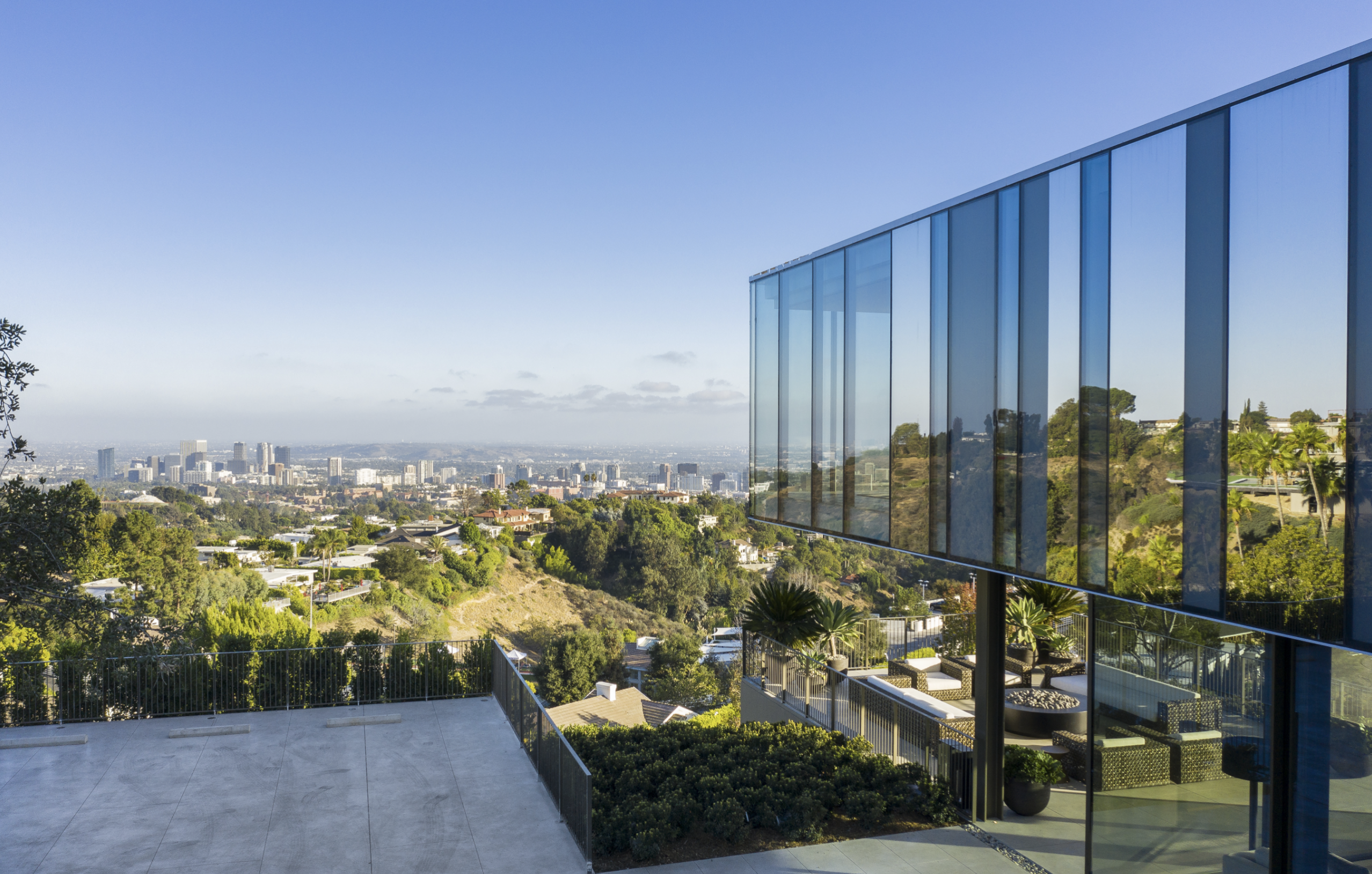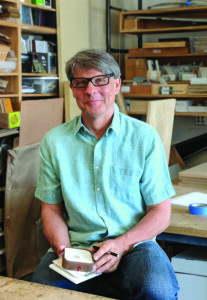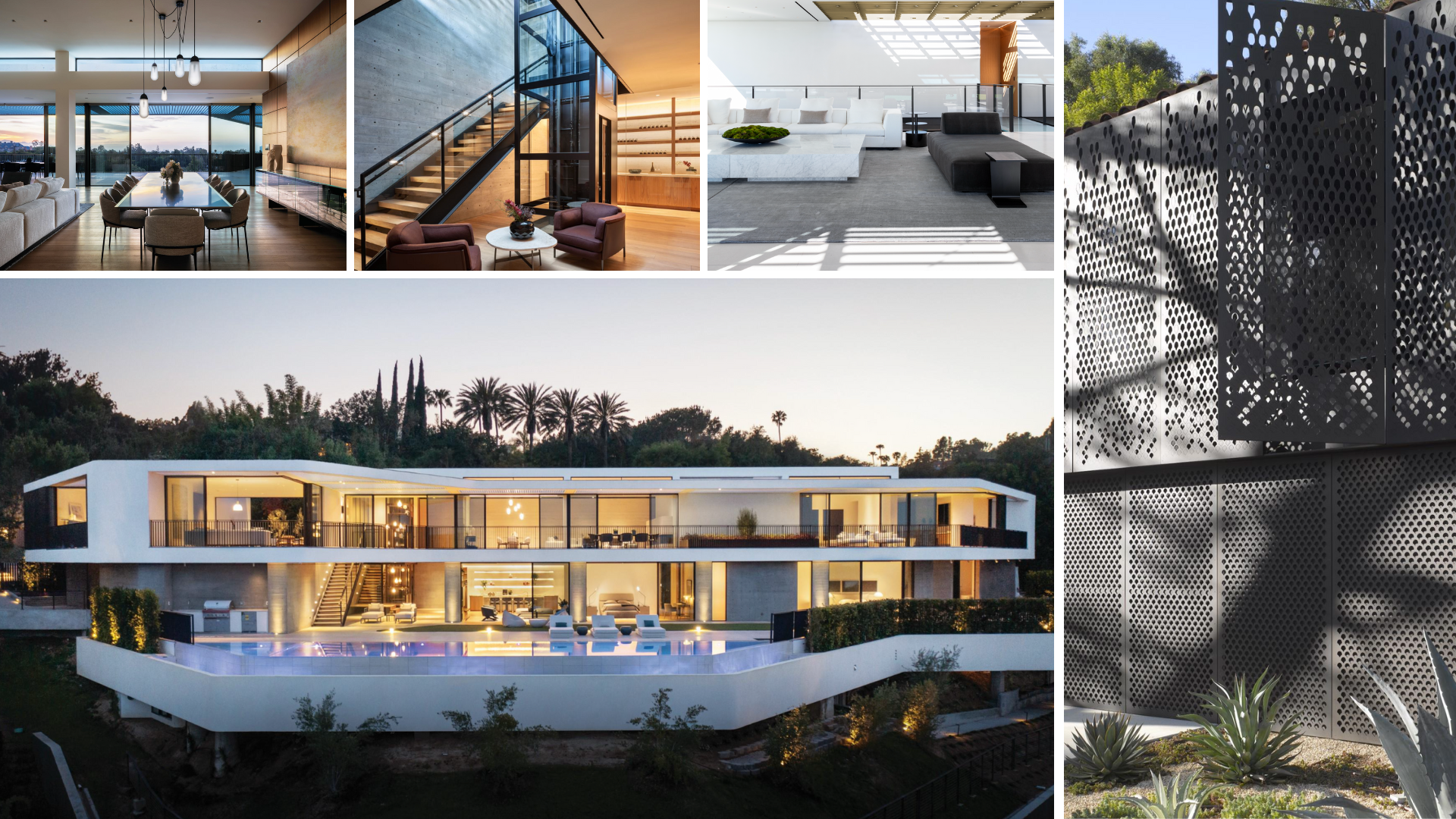By: JEAN NAYAR

Ever the outsider, architect Zoltan Pali, FAIF, found—and continues to create—a clear sense of place in Southern California.
Nothing about Zoltan Pali’s path as an architect has been typical. “In the early years, I had a non-stop chip on my shoulder,” says the 62-year-old L.A. native and committed modernist known for a diverse range of work—from notable residences like A Bronze House on Nightingale above Sunset Strip to cultural and civic projects like the $300 million restoration of the Getty Villa Museum in Pacific Palisades or the Wallis Annenberg Center for the Performing Arts in Beverly Hills to sports facilities like the Michelle and Barak Obama Sports Complex in Los Angeles. The first-born son of Hungarian immigrants who escaped communist Hungary in the mid-1950s in the wake of the revolution, Pali grew up speaking only Hungarian until he started first grade in Southern California, where he was mercilessly mocked for his accent and uncommon name. While his mother ensured a traditional cultural connection with his Hungarian roots by immersing him in opera and ballet, his father, a mechanical engineer who trained in Vienna while living in a refugee camp, sparked an early interest in building and technical drawing when he was just a child.

Zoltan E. Pali, FAIF

“In those days, engineers did drafting by hand, which intrigued me,” says Pali. “By the time I was six years old, I knew I wanted to be an architect.” It was a dream more easily imagined than achieved, as it turned out. In college at UCLA, with pressure from his father to pursue engineering, he was almost kicked out due to lackluster interest before changing course and getting a degree in fine arts, all the time working his way through school as a draftsman. Later, determined to make his way into the field, he relied on his five years of professional drafting experience along with two years of arts education to get recognition from the California architectural board toward a graduate degree in architecture and, after passing the board exams, he was on his way. His first jobs working with traditionally trained fellow architects, however, highlighted the gaps in his education and left him with a sense of disconnection from colleagues in the design studio. “So I spent a lot of free time reading and teaching myself what I didn’t know about architecture—particularly history,” he says.
An early break working with acclaimed modernist Jerrold Lomax, a member of a group of architects known as the Los Angeles-12, which included high-profile names like Frank Gehry, Cesar Pelli, and Craig Ellwood, was a turning point. “He saw something in me and took me under his wing,” says Pali. “Our conversations about architecture were profoundly influential. It was an a-ha moment for me. His ideas reflected the philosophy of the modernists who worked in California and other parts of the country in the 1950s and ‘60s, like Ellwood, Richard Neutra, and Eero Saarinen. There were no crazy structural or formalist heroics. Everything comes naturally once the work is boiled down to the simplest and most authentic form. Then it becomes a matter of detail, how things come together.”
When post-modernism was at its height, Pali again found himself out of sync with his American peers as he pressed forward, creating work driven by the modernist underpinnings that resonated so clearly. Since his design approach was more akin to international architects like Renzo Piano, Norman Foster, and Richard Rogers, he’d thought about relocating to Europe for a while. “But then I asked myself, if I lived anywhere else in the world, where would I go? And the answer was L.A. because of the spirit of the place. It’s where people come to reinvent themselves, there’s more experimentation here than in most places, so I thought, how could I leave?” In 1990, he eventually founded his firm, SPF: a, where he works with a team that includes his wife, Judit Fekete-Pali, consistently pushing boundaries with advances in materials and technology. And unlike his mentor Lomax, who specialized in houses, Pali chose to explore a variety of building types, with projects like MODAA, a mixed-use live/work space in Culver City’s arts district where he keeps his office, the widely lauded Somis Hay Barn, a modest ranch structure on 40 acres of rural hills and citrus groves, and the Taylor Yard Bridge (aka Rumblefish), a pedestrian and bicycle crossing over the L.A. River.
For the most part, Pali, an inductee into the American Institute of Architects College of Fellows who have earned more than 100 awards for his designs, chooses to work close to home in various parts of Southern California, sometimes finding roundabout inspiration and influence from pioneering philosophers, such as research scientist Bruce Lipton and his emphasis on epigenetics, or dystopian novels or films, like Kazoo Ishiguro’s Klara and the Sun or Olivia Wilde’s Don’t Worry Darling, as he works on current projects ranging from a bridge in community development by the Wonderful Company in Lost Hills to a performing arts high school in Santa Monica. “I’m fascinated by dystopian stories, maybe just as a reminder that there’s a wrong way to look at life,” says Pali, reflecting on the existential chaos now taking place so close to the homeland of his parents. “After hearing so many stories about revolution and exodus after WWII, it’s hard to believe those stories are repeating themselves today,” he says. “I often say my parents crawled over minefields to get here so their kids could live free, so I have to honor that tremendous effort.” Despite his unconventional path to accomplish it, his work speaks volumes about that intention.
